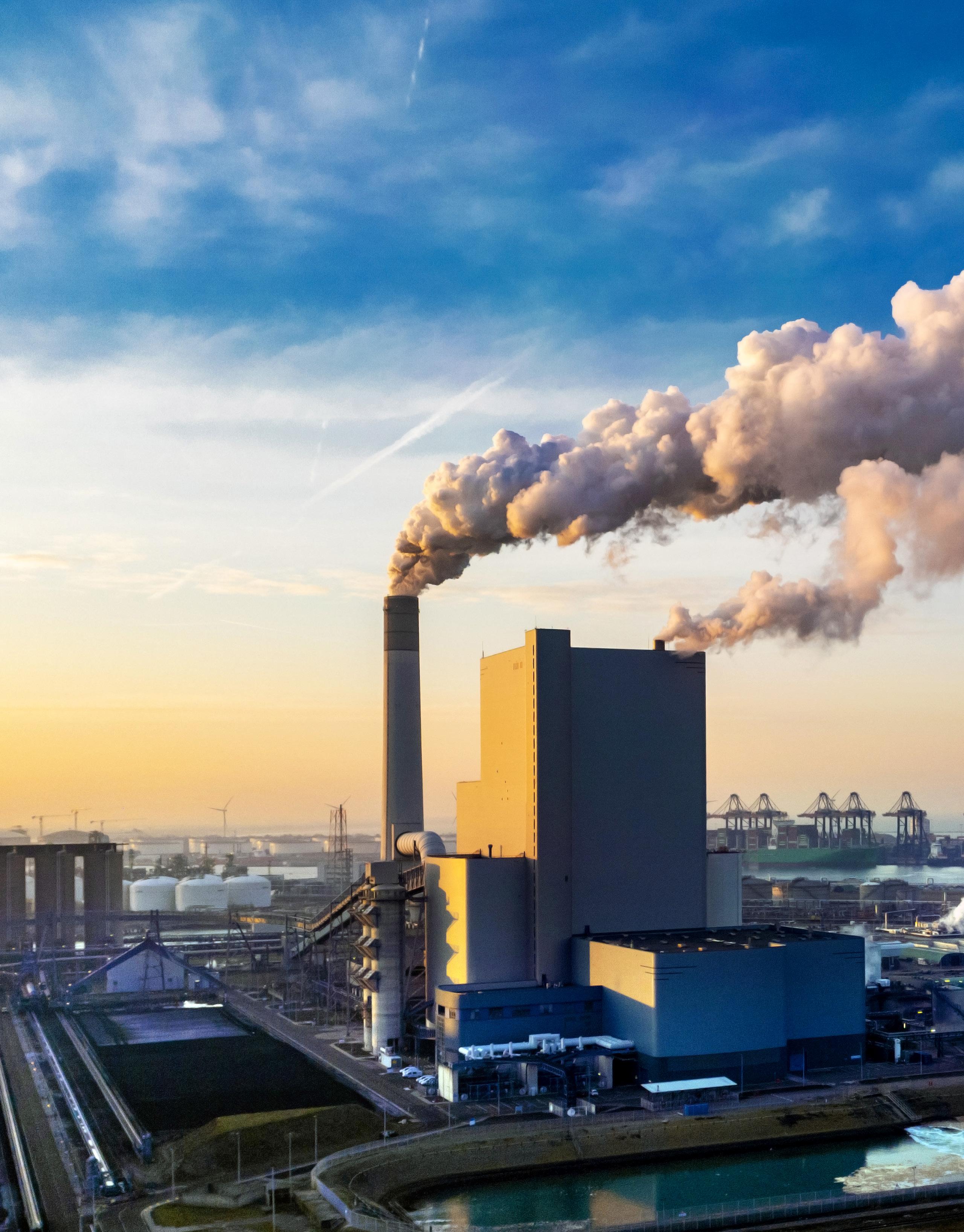

The Quiet Disruptors
Halliburton can support your decarbonization journey by delivering cost-effective CO2 and Hydrogen subsurface storage solutions to help meet your organization’s long-term sust ainabilit y commitments.
Together, we can engineer the future of energy
Learn more at halliburton.com/CCUS









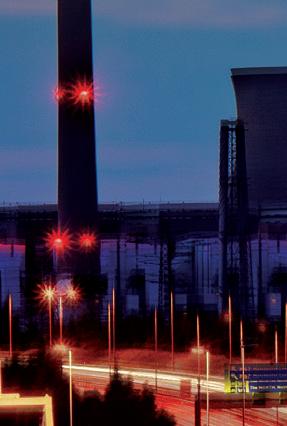














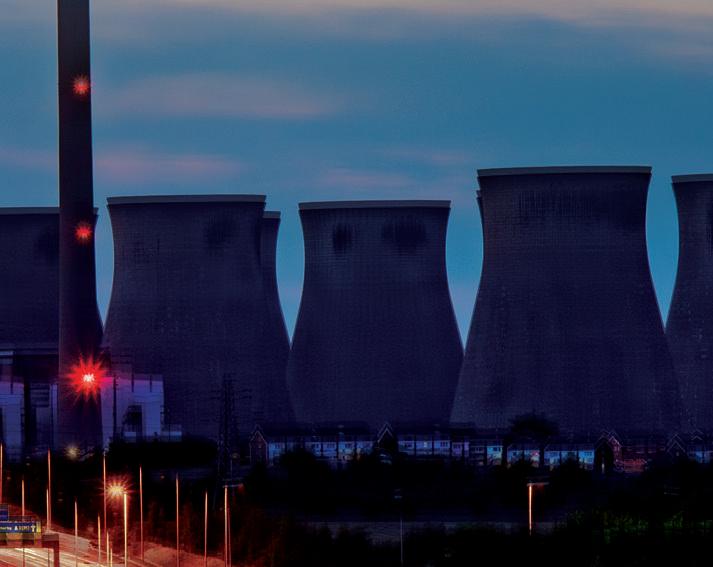
























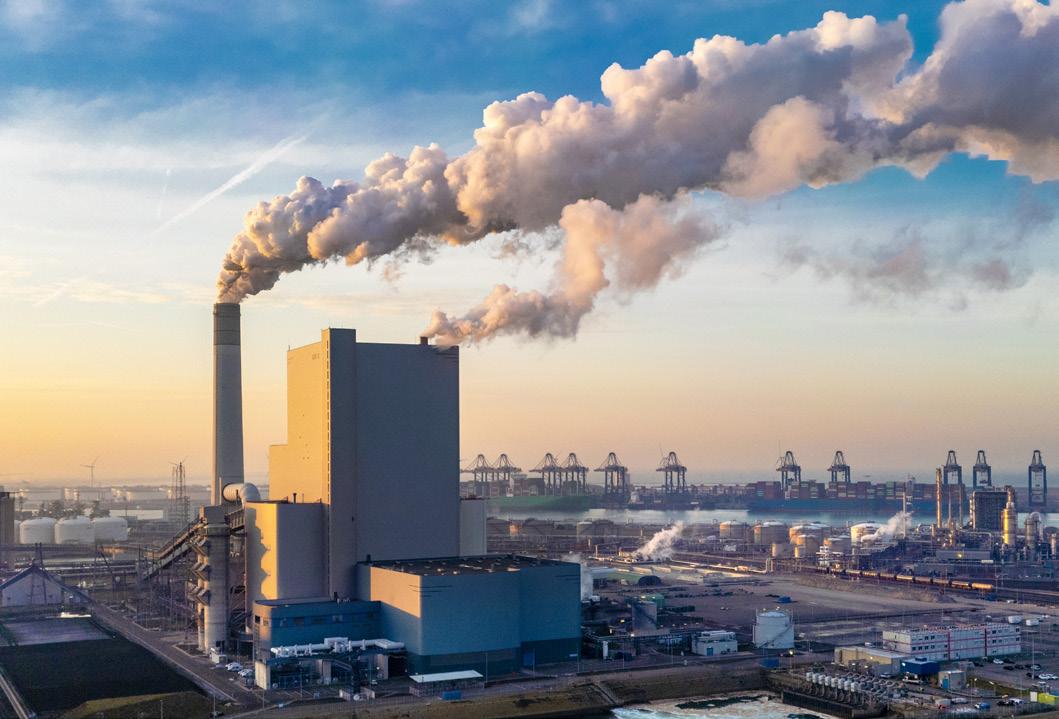


Danielle Piekarski
Kacey Garber, Tara Gross &
Ardian Nurfalaq, Toshiba America
Hostetler, SGS Engineers
Systems
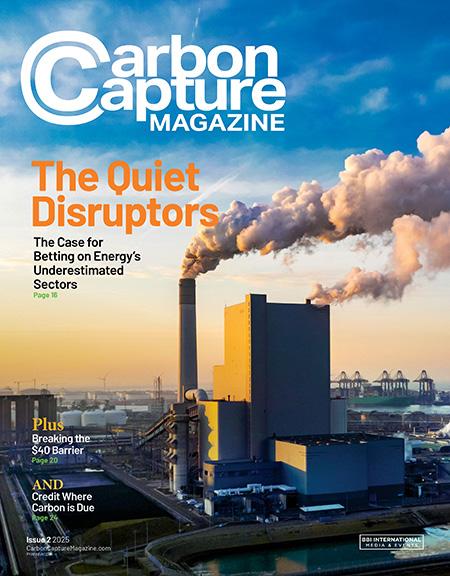
Pushing Potential to Proof
Across the carbon management landscape, the conversation is shifting from possibility to proof. This issue captures that evolution. Rather than debating whether carbon capture and utilization can scale, our contributors examine how it is being engineered, financed and legislated into reality.
In Infrastructure, the “Quiet Disruptors” on page 16 makes a compelling case that long-overlooked sectors, carbon capture and biofuels, are now positioned for breakout growth. Decades of foundational work have created conditions for rapid investment, challenging the notion that only emerging technologies drive an energy transition.
In Technology on page 20, innovations like WACCE challenge the economic barriers that have long stood in front of large-scale carbon removal. By aiming to “break the $40 barrier,” the article reframes carbon capture not just as a climate imperative but as a market-ready enterprise. We see it as something capable of monetizing multi-gas removal and industrial byproducts such as argon. It is an early indicator that profitability and decarbonization are beginning to converge.
Our Spotlight features bring the blueprint into focus. SCS Engineers introduces a time-based modeling approach to Class VI permitting, redefining risk and reducing project footprints. Toshiba outlines the strategic steps required to move ambition toward steel-inthe-ground deployment. These are not hypotheticals; they are the mechanics of build-out.
No build-out moves forward without policy alignment. Page 24 examines the legislative framework that reinforces certainty for investors and parity for emerging reuse pathways. With updates to 45Q under the One Big Beautiful Bill Act, carbon management maintains bipartisan momentum. Policy is no longer trailing innovation; it is beginning to move in step with it.
What emerges throughout this issue is a shared momentum: carbon capture moving from niche to necessary, supported by collaboration across engineering, finance, regulation and industry. The work ahead remains complex, but the signal is clearer. This is not only an emissions strategy; it is the foundation of a circular carbon economy.
DANIELLE PIEKARSKI
CONTENT MANAGER
Carbon Capture Magazine dpiekarski@bbiinternational.com
VOLUME 4 ISSUE 2
THE TEAM
CEO Joe Bryan jbryan@bbiinternational.com
President Tom Bryan tbryan@bbiinternational.com
COO John Nelson jnelson@bbiinternational.com
Vice President of Production & Design Jaci Satterlund jsatterlund@bbiinternational.com
Senior Account Manager Chip Shereck cshereck@bbiinternational.com
Account Manager Bob Brown bbrown@bbiinternational.com
Director of Content/Sr. Editor Anna Simet asimet@bbiinternational.com
Content & Program Manager Danielle Piekarski dpiekarski@bbiinternational.com
Senior Marketing & Advertising Manager Marla DeFoe mdefoe@bbiinternational.com
Customer Service Coordinator Brandon McGarry brandon.mcgarry@bbiinternational.com
Subscriptions Subscriptions to Carbon Capture Magazine are free of charge to everyone with the exception of a shipping and handling charge for any country outside the United States. To subscribe, visit CarbonCaptureMagazine. com or you can send your mailing address and payment (checks made out to BBI International) to: Carbon Capture Magazine/Subscriptions, 308 Second Ave. N., Suite 304, Grand Forks, ND 58203. Reprints and Back Issues Select back issues are available for $3.95 each, plus shipping. Article reprints are also available for a fee. For more information, contact us at 866-746-8385 or service@bbiinternational.com.
Advertising Carbon Capture Magazine provides a specific topic delivered to a highly targeted audience. We are committed to editorial excellence and high-quality print production. To find out more about Carbon Capture Magazine advertising opportunities, please contact us at 866-746-8385 or service@bbiinternational.com.
Letters to the Editor We welcome letters to the editor. If you write us, please include your name, address and phone number. Letters may be edited for clarity and/or space. Send to Carbon Capture Magazine/Letters, 308 Second Ave. N., Suite 304, Grand Forks, ND 58203 or email to dpiekarski@bbiinternational.com.
COPYRIGHT © 2025 by BBI International
TM Please recycle this magazine and remove inserts or samples before recycling

AtmosClear Selects ExxonMobil for CO2 Transportation and Storage
AtmosClear BR LLC has selected ExxonMobil to provide CO2 transportation and storage services for its carbon removal project at the Port of Greater Baton Rouge, Louisiana. The project will capture up to 680,000 metric tons of biogenic CO2 annually from AtmosClear’s biomass energy with carbon capture (BECCS) facility, with potential for additional volumes. ExxonMobil’s Carbon Capture and Storage system, which includes Class VI wells, existing pipelines and advanced monitoring systems, will enable secure and cost-effective storage while supporting the delivery of high-integrity carbon dioxide removal (CDR) credits for Microsoft and other customers.
Fidelis Cofounder and CEO Dan Shapiro highlighted ExxonMobil’s infrastructure, safety culture and operational excellence as key factors in the partnership, calling it a major step toward fulfilling one of the largest CDR purchase agreements in history. ExxonMobil Low Carbon Solutions President Barry Engle added that the project will create jobs, attract investment and expand the company’s CCS system, the largest of its kind worldwide.

Deep Sky Secures First-of-Its-Kind Financing with Finalta Capital to Advance Carbon Removal in Canada
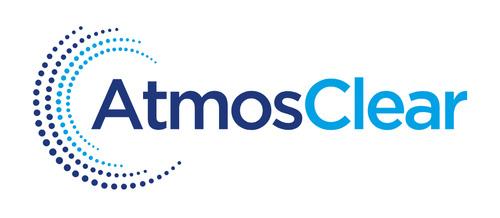
Montreal-based carbon removal developer Deep Sky has secured an $11 million credit facility from Finalta Capital, Canada’s largest private lender focused on refundable tax credits. The financing is tailored to support capital investments in Deep Sky’s flagship Alpha facility in Innisfail, Alberta, marking the firstof-its-kind deal in Canada for carbon capture, storage and utilization (CCUS).
Deep Sky Alpha is the world’s first cross-technology carbon removal facility, capturing and sequestering CO2 from the atmosphere to produce high-quality carbon removal credits. Operational within 12 months of breaking ground, it became the first direct air capture facility in North America to sequester CO2 underground in August 2025 and has already pre-sold all its credits.
Deep Sky CEO Alex Petre called the agreement a milestone that proves carbon removal is a “bankable industry.” Finalta Capital President Pierre-Luc Labelle emphasized the firm’s role in unlocking liquidity for emerging climate solutions while driving both environmental and economic returns.
North Dakota Issues Grants for CO2 Capture, Utilization and Efficiency Projects in Ethanol Plants
North Dakota Agriculture Commissioner Doug Goehring has announced funding opportunities under the state’s Low Carbon Fuels Program to support ethanol facilities pursuing projects that lower the carbon intensity of production. Authorized by the 69th Legislative Assembly, the program provides grants for capital projects that include carbon dioxide capture and storage, beneficial use of CO2, energy efficiency upgrades and ethanol yield improvements.
Grant awards are capped at $3 million per biennium, and applicants must provide at least 50% of total project costs as a match. The initiative is intended to help ethanol plants invest in infrastructure that reduces emissions while improving operational efficiency and long-term competitiveness.


Canada Invests in Innovative Carbon Capture and Storage Projects in British Columbia
The government of Canada is investing $5.8 million to advance carbon management technologies in British Columbia, supporting projects that aim to reduce emissions while strengthening the clean economy. Svante Technologies Inc. will receive $1.3 million to expand its testing capabilities through new facilities, while Anodyne Chemistries Inc. will receive $2 million to scale up industrial processes that convert CO2 into valuable chemicals such as formate. Agora Energy Technologies Ltd. in Vancouver will receive $2.4 million to advance CO2 capture and utilization using impure flue gas.
Minister of Energy and Natural Resources Tim Hodgson said the projects demonstrate how energy innovation and climate action can work together to protect the environment and grow the economy. Industry leaders from Svante, Anodyne and Agora highlighted the funding as a strong signal of confidence in Canada’s CCUS sector. The projects were funded under Natural Resources Canada’s Energy Innovation Program, part of a broader $319 million federal commitment to CCUS research, development and demonstration.
Block Energy Completes First CO2 Mineralization Injection Pilot in Georgia
Block Energy PLC has successfully completed its first CO2 mineralization injection pilot in Georgia, marking the first project of its kind in Eastern Europe. Conducted in partnership with Rustavi Azot, a subsidiary of Indorama Corp., the pilot involved injecting 13.6 tons of liquid CO2 mixed with water into the PAT-49 well, which is connected to four monitoring wells. No surface leakage was detected, and a comprehensive monitoring program is under way to verify mineralization of the injected CO2. CEO Paul Haywood described the achievement as a milestone for Block, Georgia and Indorama, paving the way for future commercial opportunities in carbon capture and storage. Indorama Group Director Prakash Kejriwal emphasized the project’s importance in aligning with future EU carbon regulations while strengthening industrial competitiveness. The successful pilot follows earlier studies estimating a storage capacity of 151.5 million tons at Patardzueli-Samgori and positions Block Energy as a first mover in large-scale, low-cost CCS in the region.


Equinor Stores First CO2 Volumes in Northern Lights CCS Facility
Equinor has successfully injected and stored the first CO2 volumes in the Northern Lights facility, the world’s first third-party CO2 transport and storage project. The CO2, sourced from Heidelberg Materials’ cement plant in Brevik, Norway, is shipped to Øygarden, transported through a 100-kilometer pipeline and injected 2,600 meters beneath the North Sea into the Aurora reservoir.
Equinor CEO Anders Opedal called the milestone proof that carbon capture, transport and storage can scale into a viable industry, crediting government support and strong collaboration with partners. The Northern Lights Joint Venture, equally owned by Equinor, Shell and TotalEnergies, has completed Phase 1, which provides 1.5 million tons of storage annually, fully booked by customers.
Phase 2 is underway, expanding capacity to at least 5 million tons per year, backed by EU funding and contracts such as Stockholm Exergi. Equinor aims to scale its CCS capacity globally to 30 million to 50 million tons annually by 2035.


Piekarski: What are forest carbon projects and why do they matter?
Goodbody: These projects can be afforestation, improved forest management or restoration. These are activities that take place where we modify common practice to generate carbon credits through forest management. Fundamentally, these carbon projects are tools and market mechanisms that can help realize climate action goals.
They matter because institutions and individuals around the world are searching for projects that they can invest in— projects that verifiably remove carbon from the atmosphere. That “verifiably” part is very important. Carbon removal is important, but, at the same time, they also want those projects to benefit local communities and their environments.
These forest carbon projects are unique because they help meet climate action goals while also acting as mechanisms to finance social development and promote biodiversity conservation. That’s a trifecta—economic, social and environmental impact. Carbon Direct recognizes this and views remote sensing data and analyses as having major potential to benefit these projects, and it comes across in two ways.
Using remote sensing data means we can more accurately estimate and monitor changes to carbon stocks through time. Consequently, the number of credits being generated, bought, sold and retired is more defensible, conservative and accurate. At the bottom line, integrating high-quality remote sensing approaches can help buyers be more confident that their climate investments in these projects are contributing to real impact.
Piekarski: What is remote sensing and why is it becoming central to carbon credit quality?
Goodbody: The cool thing is that many of us use remote sensing data subconsciously almost daily but might not realize it. We’ve probably each opened up a maps app on our phone today and seen satellite imagery—and that’s remote sensing data.
There are tons of satellites in orbit right now collecting data about our planet. This information helps us make decisions about how we manage resources, whether that’s forest management or agriculture, for example. Remote sensing data, however, is not just collected from satellites—we can also collect it from airplanes, drones, ground-based sensors, or even cell phones.
To give a concrete analogy: I live in Canada, and there’s a lot of forest here, much of it very remote. We benefit enormously from remote sensing data and analytical tools because they help us answer questions about our forests—how they’re changing over time, where forest fires have been, or how much carbon they’re potentially storing. Gaining those insights would be incredibly challenging, expensive or even impossible without remote sensing.
Using that same example of Canadian forests, if we replace it with a carbon project anywhere in the world, it highlights how remote sensing data and the workflows applied to it can help us more accurately measure potential carbon stocks, monitor and estimate changes through time, report those estimates and then verify them. The more we can standardize and improve accuracy, the more trust buyers can have that their investments are contributing to meaningful climate impact.
Learn more about Carbon Direct’s work with Meta, the challenges to high-quality remote sensing, and how project developers can adopt these tools by listening to the full podcast at https://carboncapturemagazine.com/podcast/397.
Groundbreaking Time-Based Model Sets New Standard for Class VI Permits
SCS Engineers, in collaboration with the U.S. Environmental Protection Agency, stands on the verge of a groundbreaking Class VI well permit approval—driven by an innovative computational modeling approach that redefines how critical pressures are calculated. By integrating both spatial and temporal dimensions, the model delivers site-specific results and produces a realistic project Area of Review (AoR), typically at a fraction of the size generated by standard equilibrium methods. This makes on-site CO2 storage viable, reduces reliance on costly pipelines and long-distance transport, and mitigates public opposition tied to safety and land use concerns.
A Step Change in Modeling for Carbon Capture and Sequestration
The Class VI well permit requires defining the AoR by determining the critical pressure threshold where CO2 saturated brine can migrate upward and endanger an underground source of drinking water (USDW). Standard EPA guidance is based on reaching hydrostatic equilibrium and uses a potential energy comparison of the two boreholes: one filled with brine, and another assumed to be improperly sealed with cement from prior oil and gas production. In theory, this comparison establishes a balance point between pressure differentials, at which brine will not migrate into the USDW.
The standard approach has limitations: it does not capture how pressures rise or fall over time, or how long equilibrium takes to establish. As a result, the standard method can significantly underestimate critical pressure and overestimate AoR size. That distortion magnifies project complexity and directly drives up costs for CO2 transport, long-term monitoring, and corrective action planning. In many cases, a proposed project becomes infeasible after defining the AoR using the standard guidance.
To address this, SCS Engineers developed a Computational Pressure Model that calculates brine migration as a function of time and overpressure in the injection zone.
Brine Migration: Time Tells a New Story
In 2023, SCS Engineers partnered with the EPA to create a customized CP Model for a deep well injection site along a tectonically active continental margin. Unlike standard pressure comparisons, the CP Model accounts for how temperature, pressure and salinity gradients influence hydrostatic pressure and brine migration over time.
Built to include site-specific subsurface geologic and salinity data, the CP Model uses discrete cells to represent the USDW, an unplugged legacy borehole, and the CO2 injection zone. This model generates project-specific timelines of pressure by including:
• Time-stamped data at 1- and 5-year intervals to track brine migration as pressures rise and fall.
• A 70-year model horizon—50 years beyond the proposed injection period to provide added safety.
One of the important discoveries is that the duration of overpressurization in the injection zone is limited, and this in turn limits
the potential for upward brine migration. AoR dynamic models show that pressure in the injection zone typically decreases quickly after the end of injection. Consideration of the limited duration of overpressure is important to understanding the potential risk improperly plugged wells may pose to underground sources of drinking water.
The models also show that it takes long durations of overpressure to reach hydrostatic equilibrium, contrary to the standard guidance assumption that balance is reached immediately upon the start of injection. The model demonstrates that the rate of brine flow in an improperly plugged well is a complex function of time, and that the dynamics of the system must be considered to accurately assess potential risk.
A First-of-a-Kind Map for Brine Migration Potential
During the two-year collaboration, SCS Engineers and EPA refined the CP Model and introduced the Endangerment Potential Map—a spatial visualization of migration risk across the site. Instead of relying on a single evaluation point, the EPA suggested a spatially distributed map using thousands of data points. Using advanced mathematics and statistical evaluation, SCS Engineers generated a sitewide contour map that spatially depicts potential brine migration, integrating modeled pressure increases, salinity and subsurface geologic conditions.
The map reveals zones of higher and lower endangerment potential, ultimately showing that the risk from any single borehole is about one in 10 million, providing the EPA with a significant margin of safety.
As required in the permit, subsurface conditions are monitored regularly during and after injection. If conditions change significantly over time, SCS Engineers will evaluate whether the CP Model requires revision. Both the model and map can be updated with realworld monitoring data to fine-tune ongoing site management.
CCS Unlocked Across Industries
The time-based CP Model represents a paradigm shift in critical pressure calculations and the power of collaboration. Time-based critical pressure calculations define an authentic AoR, enabling more cost-effective CCS projects and strengthened accountability to regulators and stakeholders.
This model doesn’t just redefine pressure calculations—it makes CCS a viable emissions reduction stopgap as industries pursue operational decarbonization. For sectors like ethanol processing, where CO2 is inherent to production, CCS isn’t merely transitional—it can be a cornerstone of their CO2 management strategy. With SCS Engineers’ CP Model, that foundation starts here. Large-scale carbon storage is happening today. SCS Engineers can help you make it happen.
Authors:
Kacey Garber, PG – Senior Project Professional
Tara Gross – Project Advisor
Charles Hostetler, Ph.D. – Senior Project Advisor
































































































































































































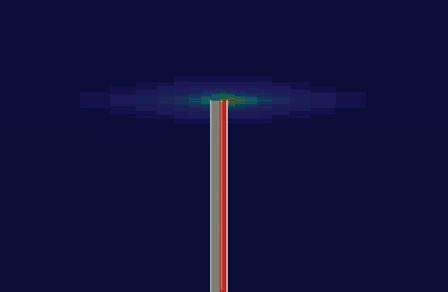








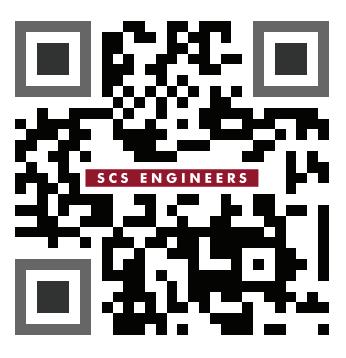
Getting Started on Your CCUS Project
Embarking on a carbon capture, utilization and storage (CCUS) project is a significant step toward environmental stewardship and regulatory compliance. The journey begins with understanding the various aspects of carbon management, including the capture, conversion and repurposing of CO2, as well as exploring alternatives to reduce greenhouse gas emissions.
Navigating the complexities of regulations, funding, partners and technical requirements can be significant. To start, one must consider several critical questions: How will the captured CO2 be used or stored? Is there a suitable sequestration site and nearby infrastructure? What are the options for utilization? How will the project be funded, and can you leverage $85/ton tax benefit? Additionally, assessing the impact on the existing facility’s steam source, availability and power consumption is essential.
The most effective approach to assess feasibility is initiating a Pre-FEED (front-end engineering design) or conceptual engineering effort. This preliminary stage includes feasibility studies, technology selection, process design packages, heat and material balances, process flow diagrams and piping and instrumentation diagrams, and equipment design. The goals of Pre-FEED are to define the project scope, develop cost estimates, identify risks, and develop project schedules.
Following Pre-FEED, a FEED study provides a detailed evaluation of the project scope, cost estimate, risk and schedule,
ultimately leading to a decision on whether to proceed. The full engineering design phase that follows FEED involves finalizing documentation for construction, detailing piping isometrics, utility systems, mechanical datasheets for equipment, civil/structural design and equipment procurement.
After the engineering and planning phases, the project moves into construction, installation, commissioning and start-up. This structured approach ensures that every aspect of the project is considered, paving the way for successful and sustainable operations.
Toshiba has supported various CCUS plants and initiatives. The most notable, the Mikawa Post-Combustion Plant,* is a testament to the company's commitment to carbon capture, utilization and storage. With the capability to capture over 600 tons of CO2 daily, which accounts for more than half of the plant's emissions, Mikawa serves as a model for efficiency and innovation. The plant’s extensive experience, amassing more than 13,000 hours of various tests, has been crucial in refining CCUS processes. Toshiba's broader efforts include R&D, plant design and deployment of advanced CO2 capture technologies, such as amine solvent solutions and P2C technology, reinforcing its dedication to a low-carbon future.
For more information on Toshiba’s approach to decarboniza-

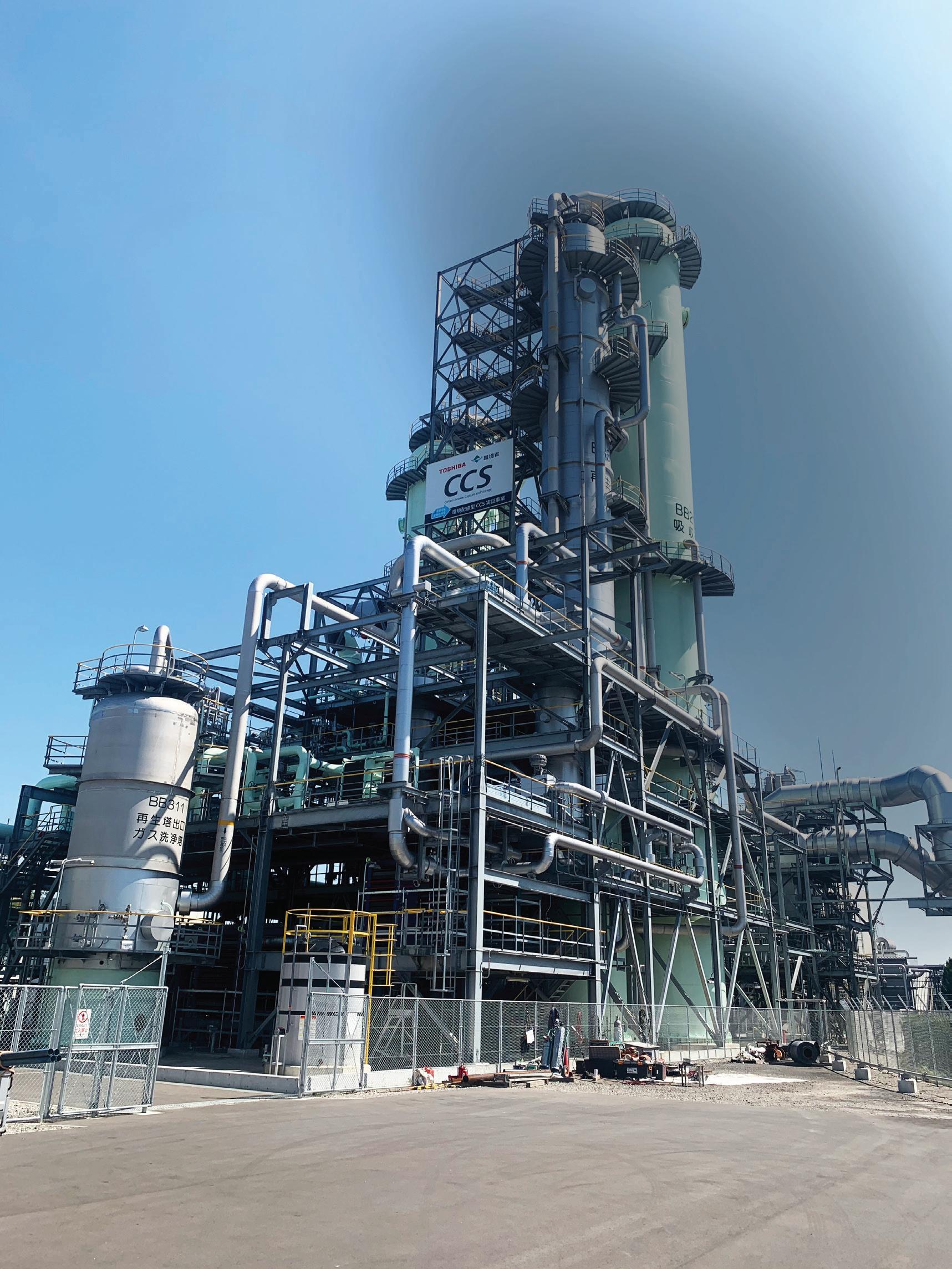








At Technip Energies, we believe in a low-carbon future. Leveraging our expertise and credible track record, we of fer a global port folio of CCUS technologies and solutions to cost-effecti vely decarbonize our client s’ operations incl uding Canopy by T.EN, a suite of post-combustion carbon capture solutions powered by Shell CANSOLV®, BlueH 2 by T.EN, our range of low-carbon of ferings, and CO 2 Connect by T.EN marine loading arm. With our solutions, we reinforce our strong position in carbon capture technologies and accelerate our strategic ambition to transform carbon into oppor tunities.
*CCUS: Carbon capture, utilization and storage





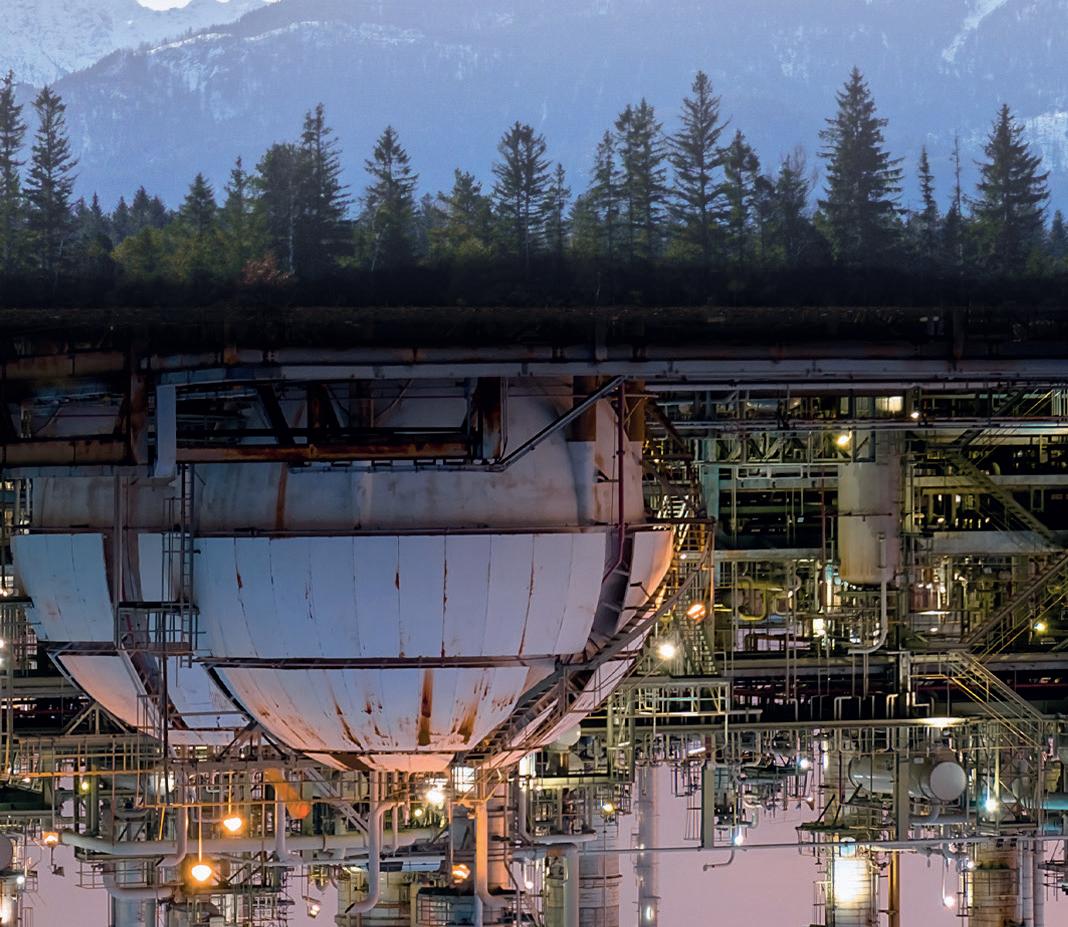








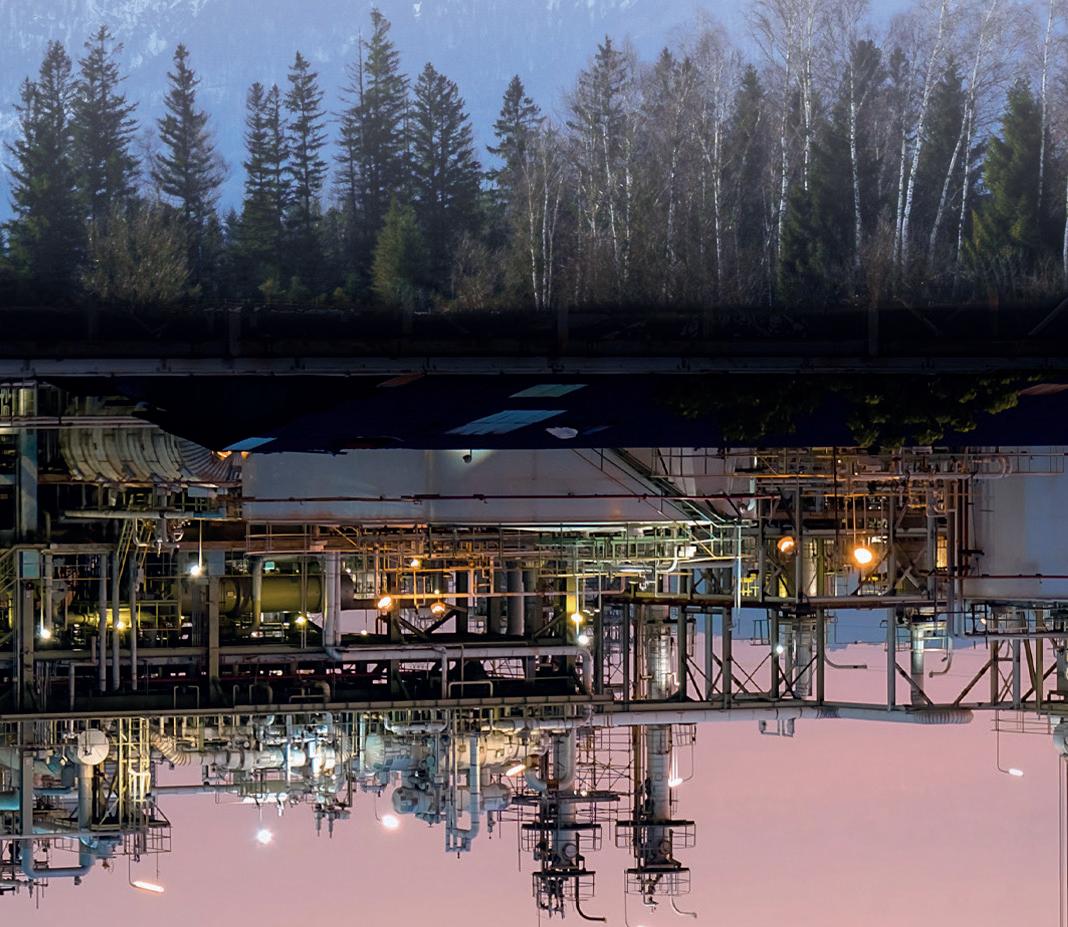











The Quiet Disruptors
The Case for Betting on Energy’s Underestimated Sectors
By Chris Rozzell
With headlines dominated by promises of artificial intelligence (AI), quantum computing and the relentless rise in data center energy needs, it can be easy to fall prey to salience bias, or the tendency to overvalue what is most visible and novel. But if we examine the patterns of history, especially the business side of innovation, another lesson emerges. Those innovations that piggyback on existing infrastructure, policies and regulations have historically had a shot at becoming quickly investable (e.g., search engines, social media, new apps). In contrast, those that need to be built from the ground up (e.g., solar power, rural electrification), can take decades to get there.
Seemingly exciting industries can spend years looking slow, messy or uneconomic, until all at once the fundamentals line up and the capital flows in. For that reason, in infrastructure-heavy sectors, it is more often the slow but stubborn developments that, having labored in obscurity for decades, suddenly become poised for breakout returns.


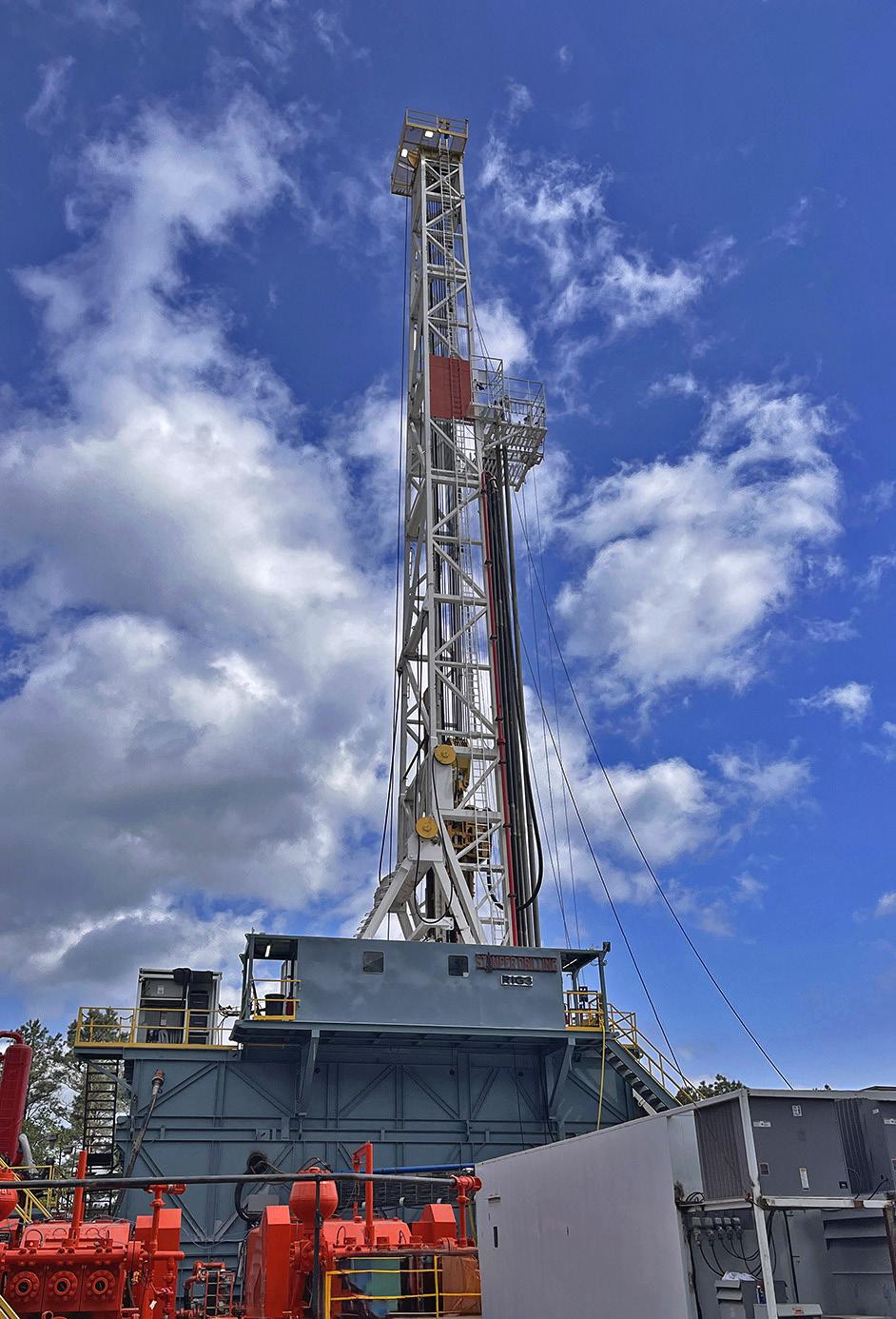

Cresta believes that both the carbon capture and biofuel sectors are at this tipping point. Both of these sectors have spent the last decade undershooting the early returns they once promised. However, they have hung on for strong fundamental reasons, and, if the following trends continue, 2025 could mark the beginning of a transition from gradual to accelerated growth.
Resilience in a Fragmented World
We are entering an era of deglobalization and strategic fragmentation. Global trade is less predictable. Energy security is no longer just about price. Instead, it’s about resilience, reliability and control. In this environment, legacy systems dependent on imported fuels have begun to become liabilities.
Biofuels, by contrast, can often be inherently local. For most developed nations, ethanol, renewable diesel, and sustainable aviation fuel (SAF) can be produced closer to home, often from agricultural or waste inputs already embedded in domestic supply chains. As countries look to insulate themselves from energy shocks, this “homegrown” attribute becomes a competitive advantage. What once seemed like a secondary climate solution now has geopolitical gravity. Just look at the SAF facility announcements made in Japan, South Korea, Brazil and numerous other countries over the past few months, and you can see this taking hold.
Carbon capture, similarly, benefits from national interest. No country, including the U.S., wants to cede its industrial base in the name of decarbonization. Capture technology allows for continuity. Heavy industry can survive, even thrive, if emissions can be managed. This makes it a politically palatable solution, and one increasingly backed by bipartisan support in the U.S. and abroad.
They’ve Done the Hard Part
Carbon capture and biofuels have already walked through the valley of early-stage resistance. They’ve spent 20-plus years tangled in regulatory complexity, refining their tech stacks, and proving viability. Many of the financial and physical infrastructure hurdles like plants, storage sites, offtake contracts and supply chain optimization have already been addressed. Carbon capture has gone from lab experiment to commercial deployment. Biofuels have cleared blending mandates and supply chain logistics. These aren’t speculative moonshots anymore. They are battle-tested.
Investing at this stage could be a lot like catching solar in 2011, at a time when it was not yet ubiquitous but following decades of cost improvements and policy alignment.

PHOTO: CBA
The rig for the stratigraphic well for Lapis’ Project Blue. A strat well is used to evaluate the geology to ensure safe, long-term storage of carbon dioxide underground.
PHOTO: CRESTA
Biogas pipe at LF Bioenergy’s Shiloh Dairy RNG facility
PHOTO: CRESTA
PHOTO: STOCK
Contrast this with the massive amounts of new power infrastructure that will be demanded by AI, which will inevitably face a years-long set of permitting delays, utility pushbacks and grid upgrade bottlenecks.
When the Narrative Shifts, Capital Follows
A common trope is that perception is reality—until it isn’t. For years, carbon capture and biofuels have lived under the shadow of skepticism. They’ve been seen as too slow, too costly or too messy. But narratives, like markets, have inflection points. And when sentiment changes, it often does so with sudden, viral momentum.
The steady resilience of policies like the 20-year-old U.S. Renewable Fuel Standard and the 17-year-old 45Q carbon sequestration tax credit has, over time, shifted the risk and reward calculus. When combined with continued improvements in technology and costs, the internal rate of return for these projects has become quite attractive. Add to that the range of low carbon incentives spreading internationally (such as Britain’s Sustainable Aviation Fuel Mandate, Canada’s Clean Fuel Regulations, and the EU’s Renewable Energy Directive and RefuelEU Aviation legislation), and you have a structural setup for capital rotation into these sectors.
Meanwhile, the AI energy theme, while both game changing and inevitable, is not immune to infrastructure inertia. You can't rewire the grid in a year. And power plant development, even when driven by exciting AI demand, is still subject to permitting friction, interconnection wait times, and community resistance.
Invest in the Overlooked, Prepare for the Tipping Point
A shared belief at Cresta is that the world is nonlinear. What seems inevitable today often stumbles. What seems stalled can catch fire.
Carbon capture and biofuels are not speculative plays anymore. They are legacy trends with pent-up momentum. Like renewable power, they have done the hard, boring work of building standards, aligning incentives and winning policy support. That positions them not just for modest growth, but for sudden, rapid expansion.
In short: The best medium-term energy investments may not be in what’s newest, but in what’s finally ready.
Author: Chris Rozzell Managing Partner, Cresta


Breaking the $40 Barrier
How WACCE
Technology
Redefines CO2 Capture Economics
By Geoffrey P. Brown, Ph.D.
As the race to net-zero accelerates, carbon capture remains too costly to scale. WACCE Technology is challenging that reality with a modular system capable of capturing CO2, methane, nitrous oxide, and even argon at costs below $40 per ton. By pairing climate-smart design with profitable industrial gas recovery, WACCE positions direct air carbon capture not just as a climate solution, but as a commercially viable business model.
Climate goals are colliding with economic reality. The global race to net-zero requires removing billions of tons of carbon dioxide (CO2) and other greenhouse gases (GHGs) from the atmosphere, yet today’s solutions remain too costly and energy-intensive to scale. Whether it is direct air capture (DAC) at $250–$350 per ton or industrial carbon capture and storage (CCS) averaging $140 per ton, the economics are daunting. Policymakers and markets are aligned on the urgency, the U.S. Department of Energy’s “Carbon Negative Shot” sets a goal of <$100 per ton, but the gap remains.
WACCE Technology is rewriting that equation. By rethinking the fundamentals of air capture physics, we are targeting commercial costs under $40 per ton under natural wind conditions, a threshold that unlocks entirely new pathways for deployment, investment and climate impact.
The current DAC and CCS landscape provides a mix of promises and frustration. Industrial CCS can capture CO2 for around $140 per ton, but only in specific point-source contexts in limited amounts. Next-generation DAC systems like Climeworks aim for $250–$350 per ton, with scalability but limited commercial viability at today’s carbon credit prices. Programs like the U.S. 45Q tax credit (up to $85/ton for CCS and $180/ton for DAC) incentivize deployment but still do not close the gap to large-scale adoption. Despite billions invested, no solution has achieved cost-parity capture that can be rapidly scaled across regions and industries.
WACCE’s modular reactor takes a different approach. Instead of relying on high-powered fans or excessive energy and chemical inputs, the system leverages natural airflow to maximize contact between gases and liquid surfaces within a compact design. This enables multi-gas capture, removing CO2, methane (CH4), nitrous oxide (N2O), and capturing argon at concentrations up to 94%
without using chemicals and with minimum water requirements. The design is scalable, deployable in arrays, and engineered for low capital and operating costs. Fully functional small-scale device test data indicates capture at less than $40 per ton under natural wind speeds of 7.5 miles per hour (3 meters per second), dramatically below industry targets. (Wind rose charts show there are ample and wide-spread locations with such wind speeds exceeding a 90% probability over 365 days a year—providing peak operational parameters over 20 hours a day on average.)
Breaking the $100 barrier is the holy grail of carbon capture. Hitting <$40/ton changes everything. At this level, voluntary carbon markets (often pricing credits at $40–60/ton) become immediately profitable. With U.S. 45Q credits, the economics turn net-positive from day one. Most importantly, capture moves from pilot-scale to gigaton potential, enabling not just emissions offsetting but actual atmospheric drawdown.
What makes WACCE uniquely investable is its dual revenue model. At <$40/ton capture cost, CO2 removal is viable in carbon markets. But equally important, WACCE captures argon (with fresh air concentrations of approximately 0.93% of the air) at roughly 9 tons per 1,000 tons of CO2 captured. With Argon selling at premium prices across electronics, medical and industrial markets, this
Figure 1: Market Economics (Cost Per Ton Comparison)
SOURCE: WACCE TECHNOLOGY
I Direct Air Capture (DAC) Greenhouse Gases & Argon
creates a powerful commercial driver that can outpace CO2 credits. For investors, this shifts the business case from subsidy-dependent to a profit-driven market disruptor.
While CO2 dominates the climate conversation, CH4 and N2O have outsized warming impacts, 28 and 273 times stronger than CO2 on a 100-year basis, respectively with N2O also being an ozone layer depletion gas. Conventional DAC systems ignore them, but WACCE’s design captures them alongside CO2. Modeling shows the overall multi-gas effect of methane and CO2 equate to an additional reduction in global warming potential of roughly 25% compared to CO2 alone. This represents a step-change opportunity: every ton captured removes not just CO2, but small amount of these other GHGs as well.
Importantly, WACCE also captures argon. While not a greenhouse gas, Argon holds substantial economic value. Unlike other systems that treat inert gases as waste, WACCE harnesses argon as a cornerstone product making the technology both a climate solution and a commodity producer.
WACCE’s economics align perfectly with policy incentives and market demand. At <$40/ton, CO2 capture not only qualifies for 45Q tax credits but yields positive margins even without subsidies. With voluntary carbon markets trading credits in the $40–$60/ton range, WACCE is positioned to meet immediate demand. The Argon opportunity is particularly compelling: a $7 billion global market projected to grow with semiconductor, welding and medical demand. Capturing and refining argon as part of a climate solution .is a unique differentiator—no other DAC or CCS platform today has argon economics built in.
WACCE’s roadmap is practical and scalable. A pilot-scale production unit will validate multi-gas capture, refine argon separation, and confirm <$40/ton costs under natural wind conditions. Modular arrays can then be scaled to capture hundreds of thousands of tons annually with minimal capital expansion. In addition to CO2 air enrichment use in agriculture, units are designed for industrial hubs, renewable sites or deployment in high-wind regions where operating costs are lowest. By combining argon sales and CO2 credits, even early deployments achieve cash-positive economics, reducing reliance on grants or subsidies.
The world doesn’t just need more carbon capture; it needs carbon capture that makes economic sense. By delivering sub-$40/ton CO2 removal, capturing CH4 and N2O for added climate benefit, and generating industrial-grade argon as a revenue stream, WACCE Technology represents a new category of climate-smart infrastructure.
Our vision is simple but bold: make carbon capture as affordable and scalable as solar or wind, enable investors to fund a solution that is both climate-smart and commercially viable, and deploy globally with modular units capable of addressing emissions at scale while creating a new industrial gas market.
The future of carbon capture cannot be subsidy-dependent; it is profitable, scalable and transformative technology. With WACCE, the climate solution also becomes the business case of the decade.
Author: Geoffrey P. Brown, Ph.D. Contact: Ken Baratzadeh, WACCE Technology. ken@waccetechnology.com
Figure 3: WACCE Direct Air Capture Process: From Greenhouse Gases to Fuels
SOURCE: WACCE TECHNOLOGY
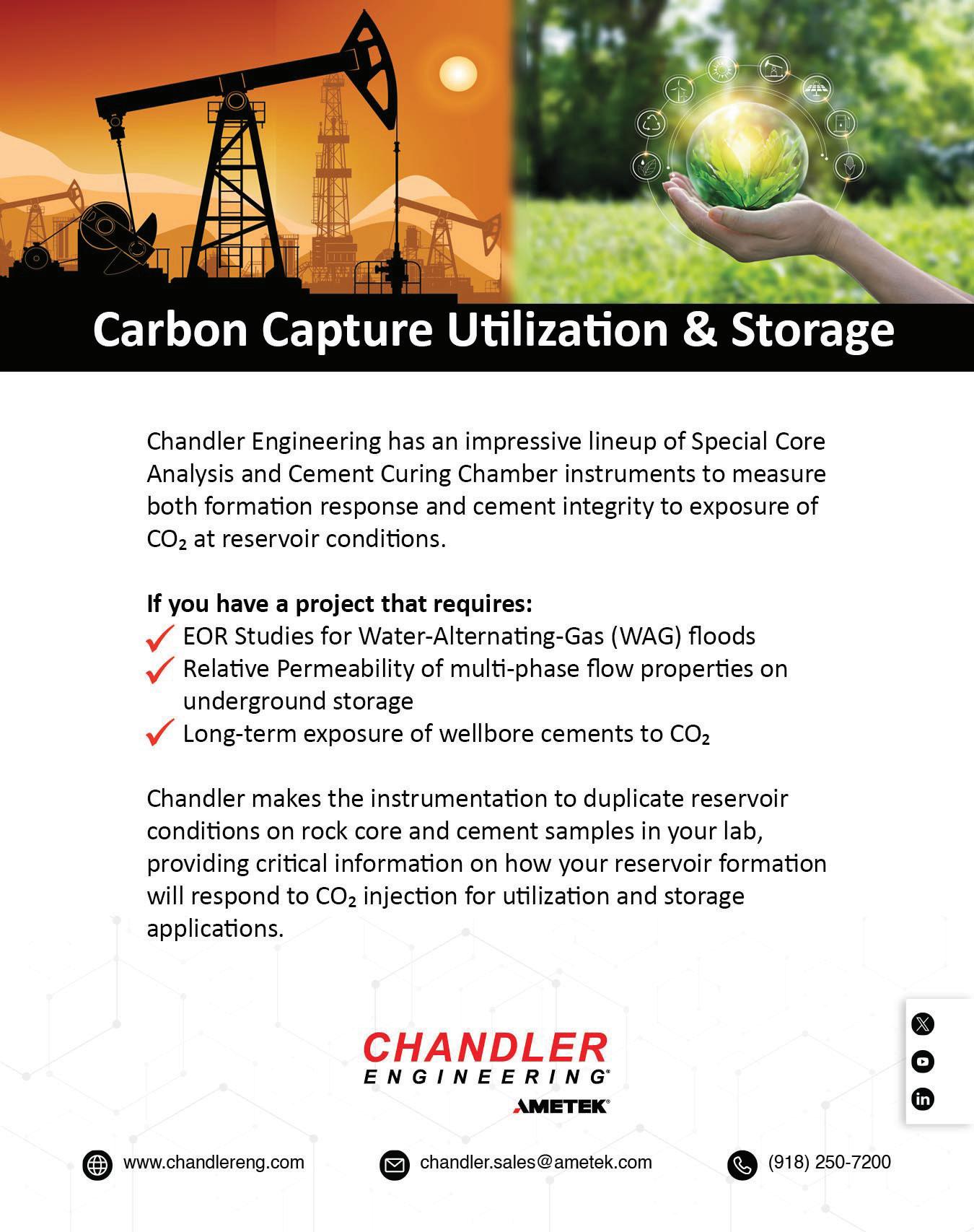
Credit Where Carbon is Due
45Q and the One Big Beautiful Bill Act
By Leo Duke and Christian Flinn
Carbon management refers to the value chain of technologies that capture, manage, and abate carbon dioxide (CO2) or carbon monoxide (CO) from critical domestic sectors such as steel, cement and chemicals production, and directly remove CO2 from the atmosphere. This carbon is then transported to appropriate sites for reuse or secure underground storage in appropriate geologic formations.
The One Big Beautiful Bill Act of 2025 (H.R.1), which Congress passed and sent to U.S. President Trump’s desk for signature on July 3, contained congressional Republican priorities and included several significant changes to clean energy tax credits. The Section 45Q tax credit, which provides a perton tax credit for captured and stored or reused carbon, is the market signal for the nationwide deployment of carbon management technologies across emitting sectors.
Thanks to long-standing bipartisan support for carbon management technologies, combined with the Carbon Capture Coalition and allied efforts, 45Q emerged from OBBBA not only intact but slightly enhanced. This positions the 45Q tax credit to continue to be the market signal for the nationwide deployment of carbon capture, direct air capture, transport, reuse and storage technologies.
Enhancements to the 45Q Tax Credit Under OBBBA Create End-Use Parity
Since its creation in 2008 and through subsequent updates, the 45Q tax credit has provided differentiated credit levels for carbon management projects depending on the end-use of captured CO2 or CO. With the passage of the OBBBA, the core credit structure is preserved, thus providing a vital market signal for a broad range of carbon capture, removal, reuse, transport and storage applications across industries. Additionally, the bill creates credit level parity for end uses of captured carbon. Alongside boosting credit values for CO2 used for enhanced oil recovery (EOR), this change to the credit structure builds upon critical enhancements made to the credit in 2022 by providing enhanced credit values for carbon reuse projects, ensuring innovative reuse technologies can fulfill their role as an essential complement to large-scale dedicated geologic storage. The modified credit values are available for projects placed in service following the law’s enactment.

PHOTO: STOCK

CO2 End-Use
For dedicated secure geologic storage of CO2 in saline or other, geologic formations
For carbon reuse projects to convert carbon into useful products (e.g., fuels, chemicals, products)
For secure geologic storage of CO2 in oil and gas fields
Credit Values Under the 2018 FUTURE Act
$50/metric ton for CO2 captured from industry, power and direct air capture
$35/metric ton for CO2 captured from industry, power and direct air capture
$35/metric ton for CO2 captured from industry, power and direct air capture
$85/metric ton for CO2 captured from industry and power; $180/metric ton for direct air capture
$60/metric ton for CO2 captured from industry and power; $130/metric ton for direct air capture
$60/metric ton for CO2 captured from industry and power; $130/metric ton for direct air capture
New Foreign Entity of Concern Requirements for Clean Energy Tax Credits
The OBBBA does impose new restrictions on clean energy tax credits created in the 2022 Inflation Reduction Act by creating Foreign Entities of Concern requirements for taxable years beginning January 1, 2026. Different tax credits are subject to other requirements, but specifically for 45Q, any entity deemed controlled or influenced by a specified foreign entity is barred from claiming the tax credit. In addition, the law prohibits any taxpayer determined to be a “foreign-influenced entity,” which includes specific thresholds for partial ownership by specified foreign entities, including ownership of debt, from claiming the 45Q tax credit. Among those credits now with FEOC restrictions, those placed on 45Q are among the least restrictive and do not apply to the materials or supply chains for building carbon management projects.
On July 7, President Trump issued Executive Order “Ending Market Distorting Subsidies for Unreliable, Foreign Controlled Energy Sources,” which, among other things, directed the U.S. Treasury to promulgate guidance for taxpayers on complying with these new FEOC restrictions. Guidance is necessary so that project developers may understand their full impact on clean energy markets and subsequent technology deployment.
What’s Next for Carbon Management
Increasingly, when we discuss what’s needed to deploy carbon management technologies across emitting sectors nationwide, the answer is “more projects.” The more projects we see across sectors, the more costs begin to reduce from learn by doing, and the greater the confidence in the technology from investors. And, with meaningful engagement at the local level, the expectation and hope are
$85/metric ton for CO2 captured from industry and power; $180 metric ton for direct air capture
$85/metric ton for CO2 captured from industry and power; $180/ metric ton for direct air capture
$85/metric ton for CO2 captured from industry and power; $180/ metric ton for direct air capture
that the public will become more comfortable with the technologies operating safely in their communities.
After the passage of OBBBA, the Carbon Capture Coalition is now focusing on ensuring progress on the available policy framework for the commercial deployment of carbon management technologies to cement carbon management technologies’ role in providing affordable, reliable, abundant and clean energy sources.
Knowing that more project deployment is the end goal, the Coalition’s to-do list for the remainder of this Congress includes high-impact legislative and regulatory activities to ensure we make continued progress on the available policy framework for deploying these technologies. This includes robust appropriations for the research, development and deployment of carbon management technologies, reforms to the available permitting regime for project deployment, making progress on necessary regulations for technology deployment, and building markets for carbon management technologies.
Conclusion
Following the passage of the OBBBA, carbon management advocates and our allies have a tremendous opportunity to continue working with bipartisan members of Congress and the administration to make progress on the necessary suite of policies and regulations for the nationwide deployment of these technologies.
Leo Duke
Flinn
Credit Values Under the Inflation Reduction Act
Credit Values Under the One Big Beautiful Bill Act
Figure 1: Captured carbon and end-use values under the Section 45Q tax credit








308 Second Ave. N., Suite 304 Grand Forks, ND 58203

